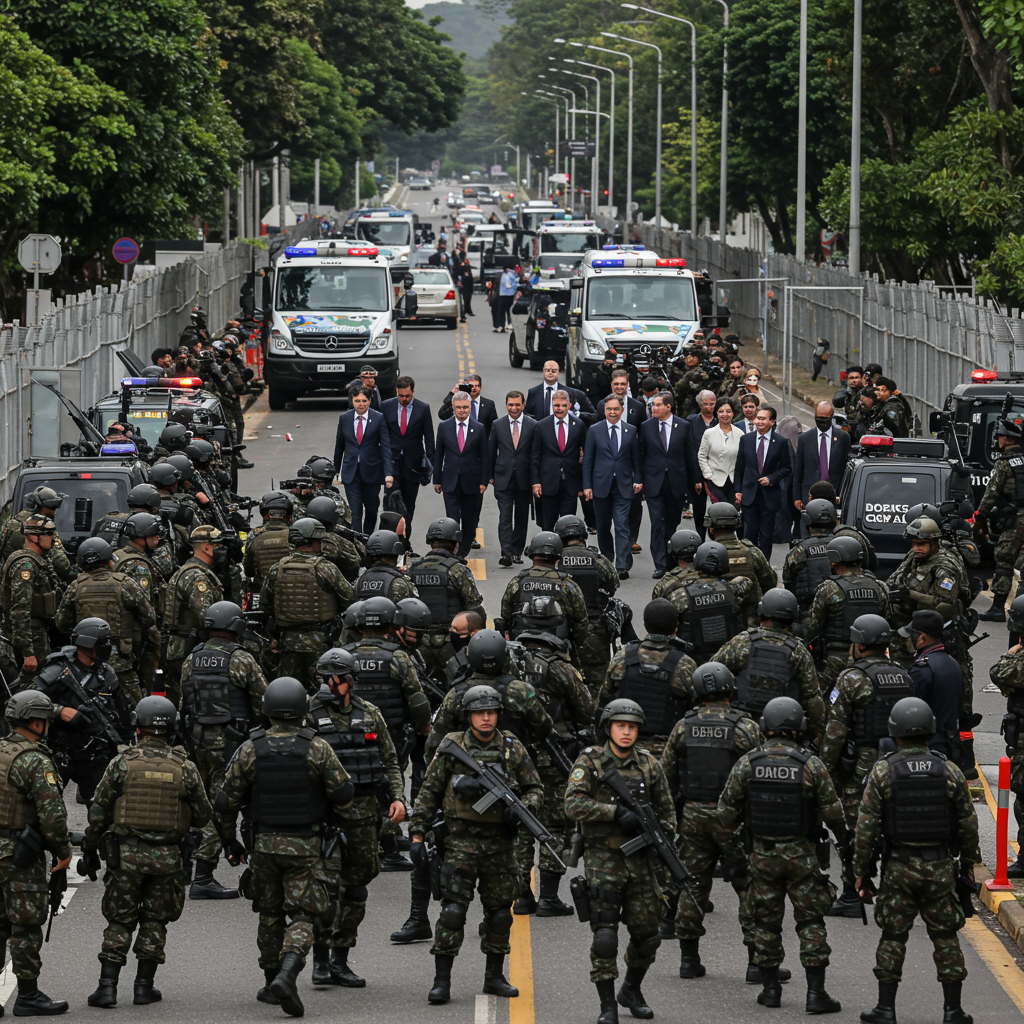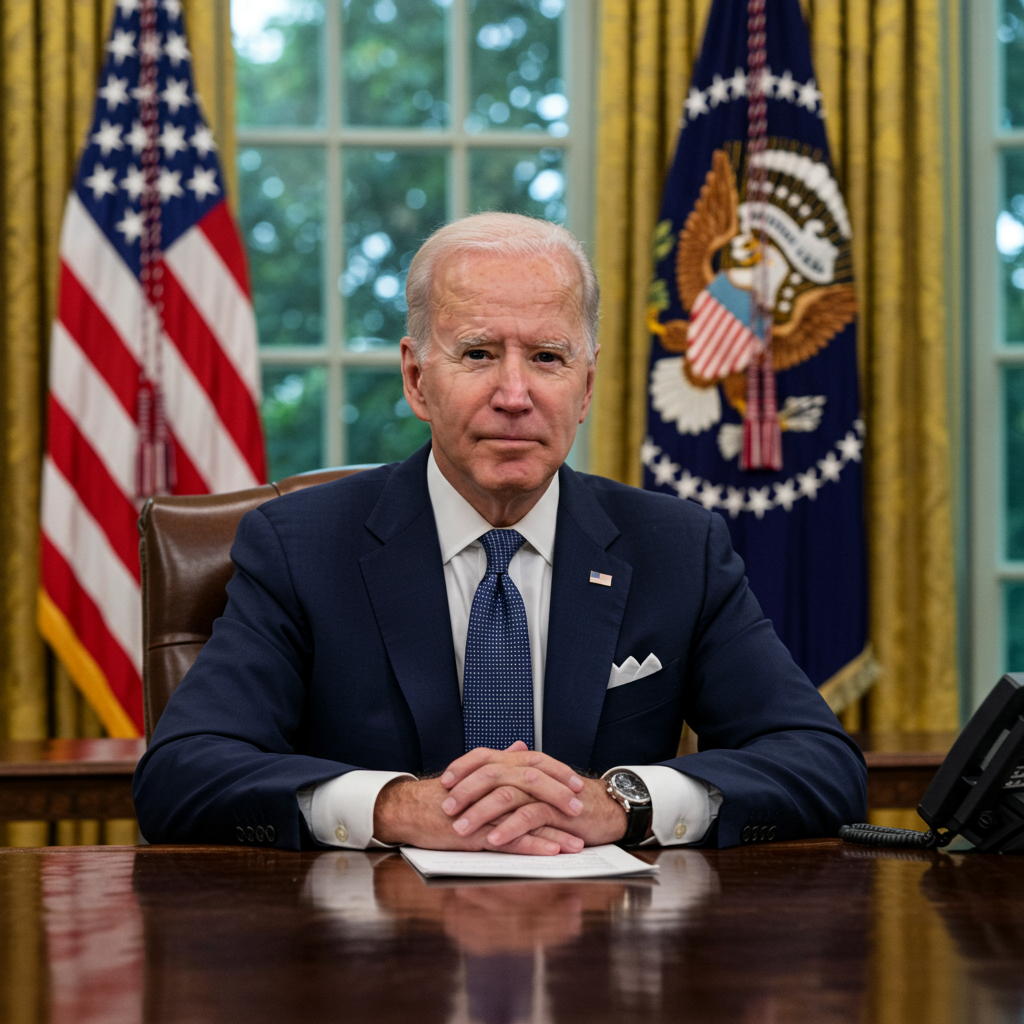Rio de Janeiro is currently implementing one of its most significant peacetime security operations in recent memory. This massive undertaking is in place as leaders and high-ranking officials from the world’s major emerging economies gather in the coastal city for this week’s critical brics summit. The scale of the security reflects the importance and high profile of the international event, drawing participants from across the Global South and beyond.
Officials have confirmed a substantial deployment of approximately 20,000 military personnel across the city. These forces are tasked with the vital mission of safeguarding leaders arriving from 28 different countries. Security is also being provided for representatives from seven key international organizations, including prominent bodies like the United Nations and the World Bank. This extensive ground presence forms the backbone of the multi-layered security strategy designed to ensure the safety of all attendees throughout the summit.
Guarding the Skies Over the Summit Venue
A central component of Rio’s comprehensive security plan involves strict control of the airspace directly above the summit venue. The event is being held at the city’s Museum of Modern Art, and the skies above this location are subject to tight restrictions. To enforce this no-fly zone, armed fighter jets are patrolling the area. These aerial patrols are specifically tasked with identifying and intercepting any unauthorized aircraft that might pose a threat or violate the restricted airspace.
Brazil’s air force has been granted clear authority regarding airborne threats. In extreme scenarios where an aircraft poses a threat and fails to comply with orders, the air force has the power to take decisive action, including shooting down the plane. This measure underscores the seriousness with which air security is being treated for the duration of the summit.
The decision to utilize armed fighter jets for securing a major event marks a significant step for Brazil. This level of aerial security was last employed during the 2016 Olympic Games held in Rio. Notably, similar robust air patrols involving armed jets were not deemed necessary for other large-scale international events hosted by Brazil in recent years, such as the FIFA World Cup or the G20 summit held just last year.
While the exact total number of aircraft involved in the air security operation has not been publicly disclosed, it has been confirmed that at least two F-5EM jets are on standby. These specific aircraft are capable of impressive speeds, approaching 2,000 kilometers per hour. They are also armed with both Brazilian-made Piranha missiles and US-built Sidewinder missiles, ready to enforce the exclusion zone if required.
Significant Airspace Restrictions and Airport Impact
Beyond the immediate airspace over the venue, wider air travel in Rio is also being impacted. For security reasons directly tied to the summit meetings, Santos Dumont Airport is being closed. This airport serves as the primary hub for domestic flights within Rio and is located just minutes away from the summit venue, making its proximity a security concern.
All flights typically scheduled to use Santos Dumont Airport are being rerouted. These domestic services are being diverted to Galeão International Airport, which serves as Rio’s main international terminal. During the period of the summit, only aircraft carrying government officials and designated security teams will be permitted to land or take off from Santos Dumont Airport. This restriction significantly alters the city’s air traffic flow and requires adaptation from travelers.
Air Force Lieutenant Brigadier Alcides Teixeira Barbacovi, who serves as the commander of aerospace operations, explained the rationale behind potential intercepts. He stated that the use of missiles would be necessary only if an aircraft posed a threat and had to be prevented from flying. The priority in such a scenario, he added, would be to ensure any necessary landing, takeoff, or even a crash occurred in an area free from crowds, specifically avoiding Rio de Janeiro’s densely populated downtown region. This highlights the critical focus on public safety during the operation.
Around 670 personnel have been specifically mobilized to handle aerospace defense throughout the summit period. This dedicated team works to manage and monitor the complex air security landscape over the city.
Ground Measures and Counter-Drone Efforts
In addition to the extensive air security measures, authorities have implemented significant ground-based security deployments across Rio de Janeiro. Brazilian navy armoured vehicles have been spotted in areas near sensitive locations, including favelas like Rocinha, as part of the overall security footprint for the summit.
Federal police are also actively involved in the security operation. Snipers have been strategically positioned on the balconies of buildings located near the hotels where the visiting leaders are being accommodated. This provides an additional layer of surveillance and protection in key areas.
Security forces have also conducted drills to prepare for potential worst-case scenarios. On a recent Saturday, special forces staged a mock chemical gas attack. This exercise targeted a crowd that had gathered for the arrival of an official, demonstrating preparedness for potential non-conventional threats.
Further enhancing the security perimeter, air force officials have placed anti-drone equipment at various points throughout the city. Furthermore, a wide-ranging exclusion zone has been established. This zone bans the use of drones throughout the city and its metropolitan area and is expected to remain in effect until July 9. These measures are crucial given the increasing accessibility and potential security risks posed by unmanned aerial vehicles.
The High Stakes of the BRICS Summit
The level of security being deployed in Rio underscores the immense importance and sensitivity surrounding this particular BRICS summit. The gathering carries added weight this year, partly due to renewed global attention on the bloc’s influence and unity. Geopolitical tensions and uncertainty, particularly in the context of significant shifts in global leadership and power dynamics, have intensified the focus on groups like BRICS.
Since its significant expansion last year, which saw Iran, Ethiopia, the United Arab Emirates, and Egypt join as full members, followed by Indonesia joining in May, the bloc has grown considerably. BRICS now claims to be a powerful voice for the Global South. However, this rapid expansion has also introduced complexities, with member states sometimes facing internal differences and competing priorities on various issues, including security, trade, and approaches to global governance. Managing these diverse interests adds a layer of challenge to the summit proceedings, potentially elevating the security stakes.
Understanding BRICS requires acknowledging its origins and evolution. The group was founded in 2009 by Brazil, Russia, India, and China, initially aiming to promote multipolarity in the global economy and challenge the dominance of established Western-led financial institutions. It became BRICS with the addition of South Africa in 2010. The recent surge in interest is evident in the fact that by 2023, more than 40 countries had reportedly applied or expressed interest in joining the bloc, signaling a growing alignment among nations seeking alternatives to the existing global order. The summit in Rio provides a platform for these nations to discuss future collaboration and strategy, making its secure execution paramount.
Frequently Asked Questions
What kind of security is deployed for the Rio BRICS summit?
Rio de Janeiro has deployed a massive, multi-layered security operation for the BRICS summit, one of its largest ever in peacetime. This includes approximately 20,000 military personnel securing leaders and officials from 28 countries and 7 international organizations. Airspace over the venue is restricted with armed fighter jet patrols and shoot-down authority. Ground security involves navy vehicles, police snipers, and anti-drone measures across the city, supported by around 670 aerospace defense personnel.
Which airport is closed during the BRICS summit in Rio?
Santos Dumont Airport (SDU), Rio’s main domestic airport located near the summit venue, is being closed during the BRICS summit meetings for security reasons. Domestic flights normally operating from Santos Dumont are being rerouted to Galeão International Airport (GIG), the city’s international terminal. Only aircraft transporting government officials and security teams are permitted to use Santos Dumont during this period.
Why is the BRICS summit security in Rio so intense compared to other events?
The intense security for the BRICS summit in Rio, including the use of armed fighter jets not seen since the 2016 Olympics (and not for the G20 or World Cup), reflects the high profile and geopolitical significance of the event. The summit brings together leaders from 28 nations and 7 international organizations at a time of heightened global tension. The recent expansion of BRICS and its growing role as a voice for the Global South against the backdrop of geopolitical shifts likely contributes to the perceived need for unprecedented security measures.
In conclusion, the city of Rio de Janeiro has implemented a truly unprecedented security operation to safeguard the BRICS summit. The deployment of thousands of military personnel, sophisticated air defenses including armed fighter jets, stringent airport restrictions, and extensive ground patrols highlights the critical importance placed on this gathering of Global South leaders. As the summit proceeds, the focus remains firmly on ensuring a secure environment amidst complex global dynamics.




